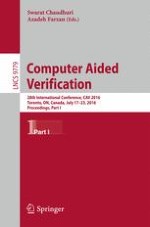2016 | OriginalPaper | Buchkapitel
Structural Synthesis for GXW Specifications
verfasst von : Chih-Hong Cheng, Yassine Hamza, Harald Ruess
Erschienen in: Computer Aided Verification
Aktivieren Sie unsere intelligente Suche, um passende Fachinhalte oder Patente zu finden.
Wählen Sie Textabschnitte aus um mit Künstlicher Intelligenz passenden Patente zu finden. powered by
Markieren Sie Textabschnitte, um KI-gestützt weitere passende Inhalte zu finden. powered by
